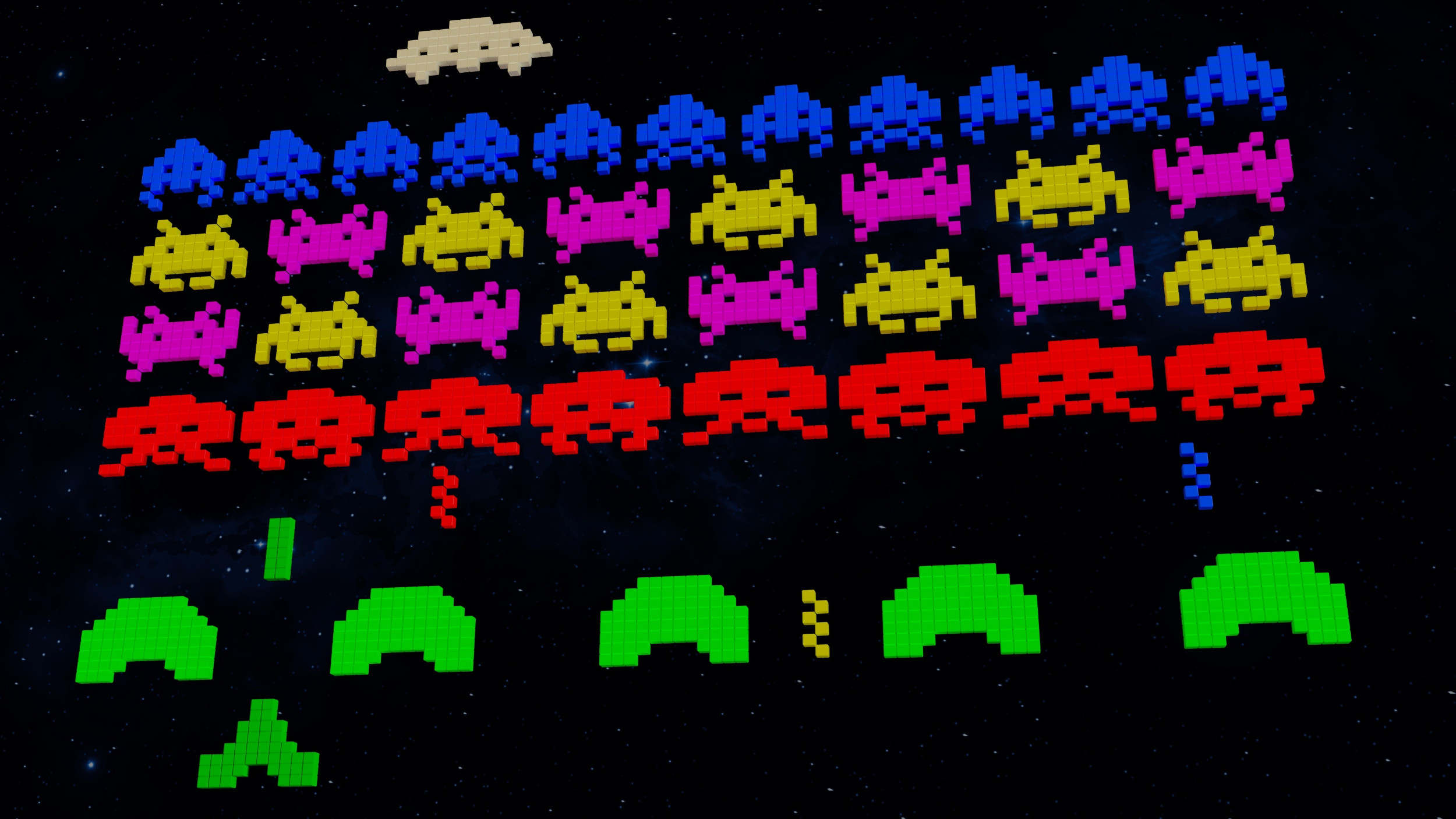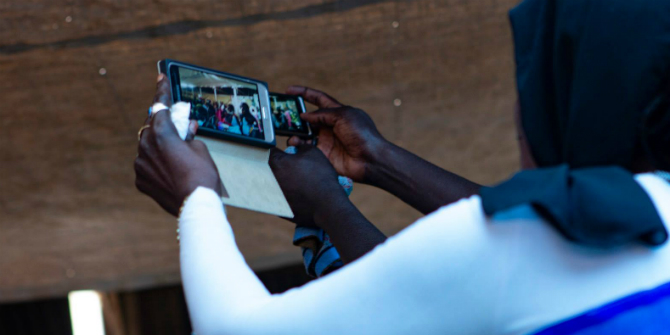 This post explores research from the DigiLitEY project, an interdisciplinary group set up to investigate young children’s engagement with emerging technologies in Europe. Kate Gilchrist discusses key findings in relation to how very young children and their parents are using digital media in the home, digital provision in schools, the relationship between online and offline play, and how reading onscreen affects learning. [Header image credit: L.-Mamchenkov-CC-BY-2.0]
This post explores research from the DigiLitEY project, an interdisciplinary group set up to investigate young children’s engagement with emerging technologies in Europe. Kate Gilchrist discusses key findings in relation to how very young children and their parents are using digital media in the home, digital provision in schools, the relationship between online and offline play, and how reading onscreen affects learning. [Header image credit: L.-Mamchenkov-CC-BY-2.0]
Digital media is becoming fully embedded in the daily lives of young children yet early learning practitioners are failing to receive the support they need to include technology within teaching provision. Augmented Reality (AR) and Virtual Reality (VR) devices can enable children to engage in learning in more playful and creative ways, and onscreen reading devices can enhance children’s reading, particularly those who have language and literacy problems. These were some of the key findings from a recent project examining the role of digital media in the daily life and learning of children aged 0-8 and their parents. The DigiLitEY project was set up to address the current lack of indepth research on young children’s engagement with new media devices in homes by looking at the impact of emerging technologies on the early years of childhood in Europe.
At home: skills and attitudes
Children aged from birth to three were observed at home in 11 families in total, in six countries (England, Spain, Israel, Finland, Sweden and Portugal). It was found that all of the children had some form of digital technology in their home lives.
Even at this early age, there were signs of children starting to mediate their own use of technology, such as asking to get down from their chair when they’ve watched one episode of a cartoon. Although children’s skills were not always well developed, they often mimicked others’ behaviour, such as pretending to use the TV remote. Where children were not using technology themselves, they were interested in observing their parents and siblings using it, and often learnt from such observations, with one parent saying:
“We never teach her, we never give her our device, but when she has the device, she knows how to unlock it: she knows how to find YouTube.”
From the parents’ perspective they frequently used technology to influence the children’s mood or behaviour, i.e. giving them a smartphone to play with if they were in a waiting room. Most parents seemed aware of the potential benefits of technology, such as educational videos. But there was still uncertainty surrounding how they should introduce technology and concern around excessive use affecting development.
At school: a lack of digital provision
A review of the current research into the use of digital technology in formal and informal learning environments showed a general consensus that children need to be exposed to digital technology at school. But it also revealed that early years’ practitioners are still failing to incorporate technology within the curriculum.
Teachers’ beliefs and attitudes towards the value of digital technology as part of learning was found to strongly relate to whether they used it or not in their teaching. Early years’ practitioners were also found to lack not only the IT skills but also the confidence and knowledge of how to employ such skills, relevant to the subject being taught. There is also a lack of adequate training, professional development and technical and administrative support for teachers. Many of the curriculums investigated also did not include any provision for developing digital literacy.
Studies of more informal learning also suggested that engagement with digital technologies were a key part of children’s learning prior to school, including developing reading and writing skills. It was found that children’s positionalities and subjectivities are important to understanding how they used technology and developed digital literacy skills. Libraries were identified as a key informal venue through which digital literacy skills might be better developed and supported.
Onscreen: reading and literacy
Children are increasingly accessing reading materials on digital devices yet little is known about what the impact of reading onscreen is on children’s literacy. The research revealed that children who are good readers can flexibly engage with diverse formats both onscreen and offscreen and focus on the narrative, not the form it appears in. Small design changes to onscreen texts can significantly enhance children’s narrative comprehension. Yet enhancement needs to be aligned with the narrative, otherwise changes can be detrimental to understanding.
There were also several key benefits to reading on digital devices:
- there is strong evidence for the positive effects of interactive features in promoting children’s projection of themselves in the story characters’ situation, thus deepening comprehension.
- digital picture books are very effective for children who are easily distracted and may serve as a good guide for low-SES parents on how to support their children’s language and story comprehension
- well-designed digital books are particularly beneficial for children at risk for language and literacy problems.
Offline and online: AR/VR and Internet of Toys (IoT)
A final strand of research looked at online digital literacy practices and their relationship to offline practices by examining use of AR and VR devices in the early childhood classroom and IoT.
It was found that AR/VR activities must be embedded in classroom projects to enhance learning, for example as one element in a varied set of activities, including physical. AR and VR can also help children to engage in learning in more playful and creative ways, ideally by helping them develop attachments to the physical world – for example creating virtual environments for physical toys to enjoy. Such an approach also helps children to engage not just consumptively with such devices but to produce and create content. The use of AR and VR also provide a good way to engage with and build upon children’s out-of-school learning, allowing them to better use such technology if and when they encounter it outside the classroom.
Research into the Internet of Toys (digital toys connected to online platforms) was also examined. It was found that there are risks concerning personal safety. For example some toys allowed Bluetooth access, allowing strangers within immediate surroundings to talk to children, and some had illegal terms and conditions in relation to sharing of personal data without parental or user consent. But there was also good evidence that they provide the opportunity to develop creativity and digital skills and encourage an appetite for further learning. The literature also showed that smart toys may enhance sociability, collaborative play, and physical activity, despite concerns to the contrary.
Recommendations
While observational qualitative research can’t assess long-term benefits or harms, there are several suggested areas for improvement:
At home:
- More research into how technology affects the lives of under-threes.
- Clearer public information for parents about children’s use of technology.
At school:
- Highlighting to teachers the implications of technology for developing children’s social skills, participation, creativity and literary.
- Research and policy should consider the broader socioeconomic context of children’s digital literacies and understanding.
Onscreen reading:
- Libraries should be used to bring digital books and support digital literacy to all sections of the population.
- Parents and teachers should be better educated on how to select high-quality digital books and developmentally and educationally appropriate literacy apps.
Online and offline toys:
- Greater collaboration between the industry and academic researchers to ensure toys are subject to rigorous testing and terms and conditions are clearer.
- More research into the health and safety implications of AR/VR.
For detailed guidance which emerged from the project see here.
This post gives the views of the authors and does not represent the position of the LSE Parenting for a Digital Future blog, nor of the London School of Economics and Political Science.





